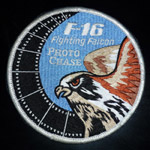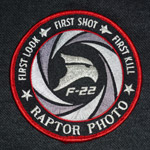 Interview with Katsuhiko Tokunaga
Interview with Katsuhiko Tokunaga

| Photos of Hellenic Air Force's F-16 block 52+ flood the internet a few years ago. That meant to be the trademark let us say of that particular aircraft and perhaps of HAF itself. These photos were taken from (who else ?) the world famous aviation photographer Katsuhiko Tokunaga who has combined his own name with some of the most elegant protraits of modern jet aircrafts. Recently we had the honor to get a mini interview with Mr. Tokunaga and learn some special things about his career and his flight experience with the Greek pilots. |
 |
| Q: Hello Mr. Tokunaga and thank you very much for accepting our inviattion for that iterview. Please tell us when did you start your engagement with Aviation Photography and which was the first aircraft that you flew with? A: I've been taking of aircraft since my childhood. It was my hobby. I first flew USAF T-33A in 1978. |
|
.
 .
|
| Q: How many different countries have you visited? How many different aircraft types have you flown with? Have you counted approximately the total amount of flying hours you have done since today? A: I'm not sure, but about 50 countries and 50-60 different first jets. I have accumulated almost 1,400 hours on military fast jets. |
 |
| Q: Is there any particular jet aircraft that you consider as your favorite and if yes which is it and why? A: Mirage 2000. Good canopy, small intake and delta wing. The latter two don't interfere your sight. Also, it's maneuverable till low speed. |
| Q: Have you attended any pilot training lessons? A: Few times, but have never finished. I'm traveling 300 days a year, and is difficult to stay in one place. |
 |
|
Left: Katsuhiko Tokunaga photo given as gift during the delivery of the F-16 blk52+ Advanced. Right: Scale 1/48 Hasegawa F-16 blk52+ model kit with Katsuhiko Tokunaga's photo.
.
|
| Q: Flying with a military jet is demanding by itself. When you also have to hold a heavy camera, shoot according to a plan and cooperate with several pilots at the same time what else is required among fitness and good reflexes? A: You have very limited time in the air. Once you takeoff, you have to land. Therefore, preparation before flight is very important. The key if the proper briefing. To plan carefully then to avoid confusions of all flight crew are necessary. It's difficult to explain and execute everything in the air in the environment. |
|
.
 |
| Q: 1 Knowledge , 2 Equipment , 3 Pre-Planning , 4 Talent. If someone asked you to give a weight percentage which would be your selection accordingly ? A: Half and half between 1. and 3. 1. you can call experience too. You don't need special equipment nor special talent. Do it safely and efficiently are the keys. |
| Q: Do you have any favorite (not necessarily Aviation) photographer? A: Not really. My pictures are not artistic ones. It's more technical thing. |
 |
| Q: Some people fly. Some other taking pictures and a few like you are lucky to do both. What would be your advice to people that would like to be like you someday? A: When I started it was a good old day. You could fly easily and much more opportunities. More companies and new aircraft more often. However, you only have new fighter every 20-30 years in these days, and F-35 could be the last one. To be honest with you, this is a job slowly dying. I'm taking pictures almost half of aviation companies in the world, and this meant there is a market only for another photographer, no more. It's very difficult to start and keep flying as a professional in these days. |
|
.
 |
| Q: A few years ago you had the opportunity to fly with Hellenic Air Force F-16s. How good was your experience flying together with the greek pilots? A: Hellenic Air Force pilots are very very professional. It was the great pleasure to work with them. |
 |
| Q: Was pre-planning and execution of that photo-shooting hard for any reason? A: Not really. I had to come to Souda twice due to the complication of authorization procedure. However, it's quite common in any country. |
 |
| Q: Greek pilots are accompanied by the reputation that they are some of the best trained pilots in the world. Did you get that feeling too from your cooperation with them? A: They are very careful to hear my words during briefing, and it was really nice. Some pilots think picture taking is easy. However, you still need to do something you don't train everyday. I was very impressed by their professional attitude. |
| Q: Did you get any souvenir from your visit to Souda Air Base? A squadron patch for instance? A: No patch, but a bottle of wine and olive oil! |
 |
|
Left:Code One Magazine (2006 Vol.21,No. 1) with Katsuhiko Tokunaga's photos of Hellenic Air Force F-16 blk52+. Right: Smoke Trails: The Last of the F-4 Phantoms book by Katsuhiko Tokunaga and Jamie Hunter (Author).
.
|
| Q: Since we are talking about patches do you wear patches while flying? Have you got any particular that you believe that is good luck for you? Could you share it with us? A: No, I don't ware the patch. It creates extra reflection to the canopy. |
  |
| These extremely rare patches belong to Mr. Tokunaga's collection that had the kidness to share with us.. |
| Q: A few months ago the new F-16 Blk 52+ Advanced began to be delivered to the Hellenic Air Force. On the other hand the A-7 Corsairs are going to be retired soon. Isn't that a great cause to visit Greece one more time? A: I'm ready to be there again anytime if there is an opportunity. The A-7 is very interesting subject. I have not flown the type for almost 15 years. |

|
|
A present from Katsuhiko Tokunaga for the www.airforce.gr visitors.
|
